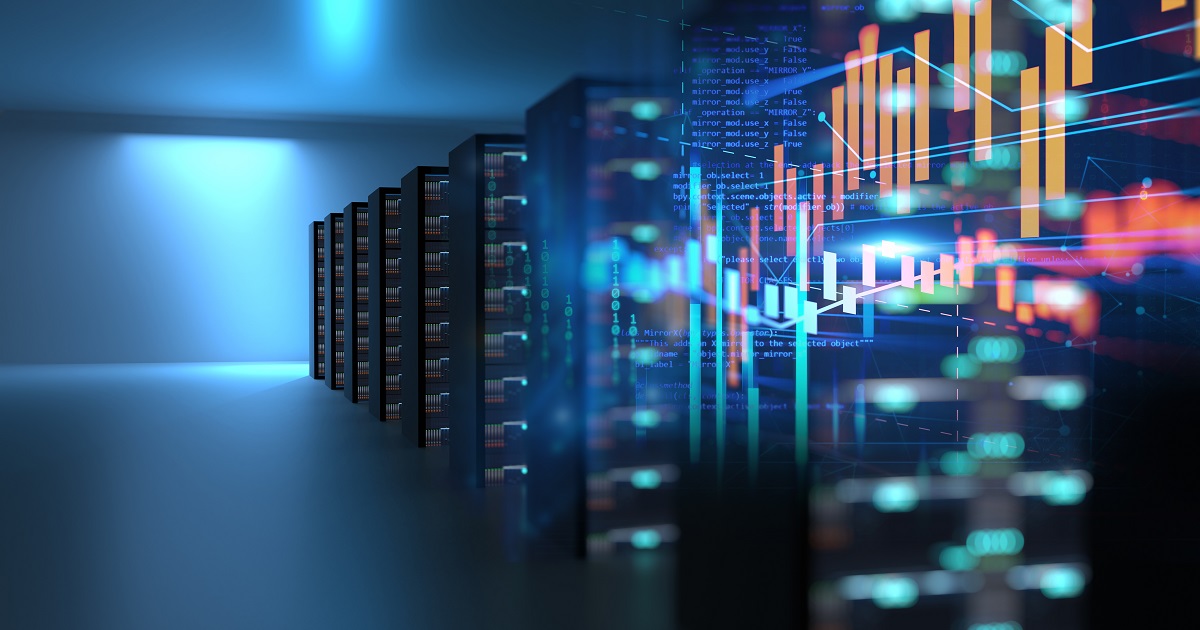
Hyper-Converged Infrastructure
Article | July 13, 2023
Unlock Courses and HCI certifications focused on hyperconvergence providing individuals with the knowledge and skills necessary to design, deploy, and manage these advanced infrastructure solutions.
Hyperconvergence has become essential for professionals and beginners seeking to stay ahead in their careers and grow in infstructure sector. Hyperconvergence courses and certifications offer valuable opportunities to enhance knowledge and skills in this transformative technology. In this article, explore the significance of hyperconvergence courses and certifications, and how they enable professionals to become experts in designing, implementing, and managing hyperconverged infrastructure solutions.
1. Cloud Infrastructure and Services Version 4.0 (DCA-CIS)
The Dell Technologies Proven Professional Cloud Infrastructure and Services Associate (DCA-CIS) certification is an associate level certification designed to provide participants with a comprehensive understanding of the technologies, processes, and mechanisms required to build cloud infrastructure. By following a cloud computing reference model, participants can make informed decisions when building cloud infrastructure and prepare for advanced topics in cloud solutions. The certification involves completing the recommended training and passing the DEA-2TT4 exam. Exam retake policies are in place, and exam security measures ensure the integrity and validity of certifications. Candidates receive provisional exam score reports immediately, with final scores available in their CertTracker accounts after a statistical analysis. This certification equips professionals with the necessary expertise to excel in cloud infrastructure and services.
2. DCS-SA: Systems Administrator, VxRail
The Specialist – Systems Administrator, VxRail Version 2.0 (DCS-SA) certification focuses on individuals wanting to validate their expertise in effectively administering VxRail systems. VxRail clusters provide hyper-converged solutions that simplify IT operations and reduce business operational costs. This HCI certification introduces participants to the VxRail product, including its hardware and software components within a VxRail cluster. Key topics covered include cluster management, provisioning, monitoring, expansion, REST API usage, and standard maintenance activities. To attain this certification, individuals must acquire a prescribed Associate Level Certification, complete recommended training options, and pass the DES-6332 exam. This certification empowers professionals to administer VxRail systems and optimize data center operations efficiently.
3. Certified and Supported SAP HANA Hardware
One among HCI certification courses, the Certified and Supported SAP HANA Hardware program provides a directory of hardware options powered by SAP HANA, accelerating implementation processes. The directory includes certified appliances, enterprise storage solutions, IaaS platforms, Hyper-Converged Infrastructure (HCI) Solutions, supported intel systems, and supported power systems. These hardware options have undergone testing by hardware partners in collaboration with SAP LinuxLab and are supported for SAP HANA certification. Valid certifications are required at purchase, and support is provided until the end of maintenance. SAP SE delivers the directory for informational purposes, and improvements or corrections may be made at their discretion.
4. Google Cloud Fundamentals: Core Infrastructure
Google Cloud Fundamentals: Core Infrastructure is a comprehensive course introducing essential concepts and terminology for working with Google Cloud. It provides an overview of Google Cloud's computing and storage services and resource as well as policy management tools. Through videos and hands-on labs, learners will gain the knowledge and skills to interact with Google Cloud services, choose and deploy applications using App Engine, Google Kubernetes Engine, and Compute Engine, and utilize various storage options such as cloud storage, Cloud SQL, Cloud Bigtable, and Firestore. This beginner-level course is part of multiple specialization and professional certificate programs, including networking in Google Cloud and developing applications with Google Cloud. Upon completion, learners will receive a shareable certificate. The course is offered by Google Cloud, a trusted provider of innovative cloud technologies designed for security, reliability, and scalability.
5. Infrastructure and Application Modernization with Google Cloud
The ‘Modernizing Legacy Systems and Infrastructure with Google Cloud’ course addresses the challenges faced by businesses with outdated IT infrastructure and explores how cloud technology can enable modernization. It covers various computing options available in the cloud and their benefits, as well as application modernization and API management. The course highlights Google Cloud solutions like Compute Engine, App Engine, and Apigee that assist in system development and management. By completing this beginner-level course, learners will understand the benefits of infrastructure and app modernization using cloud technology, the distinctions between virtual machines, containers, and Kubernetes, and how Google Cloud solutions support app modernization and simplify API management. The course is offered by Google Cloud, a leading provider of cloud technologies designed for security, reliability, and scalability. Upon completion, learners will receive a shareable certificate.
6. Oracle Cloud Infrastructure Foundations
One of the HCI certification courses, the ‘OCI Foundations Course’ is designed to prepare learners for the Oracle Cloud Infrastructure Foundations Associate Certification. The course provides an introduction to the OCI platform and covers core topics such as compute, storage, networking, identity, databases, and security. By completing this course, learners will gain knowledge and skills in architecting solutions, understanding autonomous database concepts, and working with networking and observability tools. The course is offered by Oracle, a leading provider of integrated application suites and secure cloud infrastructure. Learners will have access to flexible deadlines and will receive a shareable certificate upon completion. Oracle's partnership with Coursera aims to increase accessibility to cloud skills training and empower individuals and enterprises to gain expertise in Oracle Cloud solutions.
7. Designing Cisco Data Center Infrastructure (DCID)
The 'Designing Cisco Data Center Infrastructure (DCID) v7.0' training is designed to help learners master the design and deployment options for Cisco data center solutions. The course covers various aspects of data center infrastructure, including network, compute, virtualization, storage area networks, automation, and security. Participants will learn design practices for Cisco Unified Computing System, network management technologies, and various Cisco data center solutions. The training provides both theoretical content and design-oriented case studies through activities. By completing this training, learners can earn 40 Continuing Education credits and prepare for the 300-610 Designing Cisco Data Center Infrastructure (DCID) exam. This certification equips professionals with the knowledge and skills necessary to design scalable and reliable data center environments using Cisco technologies, making them eligible for professional-level job roles in enterprise-class data centers. Prerequisites for this training include foundational knowledge in data center networking, storage, virtualization, and Cisco UCS.
Final Thoughts
Mastering infrastructure in the realm of hyperconvergence is essential for IT professionals seeking to excel in their careers and drive successful deployments. Courses and HCI certifications focused on hyperconvergence provide individuals with the knowledge and skills necessary to design, deploy, and manage these infrastructure modernization solutions. By acquiring these credentials, professionals can validate their expertise, stay up-to-date with industry best practices, and position themselves as valuable assets in the rapidly evolving landscape of IT infrastructure.
These courses and certifications offer IT professionals the opportunity to master the intricacies of this transformative infrastructure approach. By investing in these educational resources, individuals can enhance their skill set, broaden their career prospects, and contribute to the successful implementation and management of hyperconverged infrastructure solutions.
Read More

Application Storage, Data Storage
Article | July 12, 2023
StarlingX—the open source edge computing and IoT cloud platform optimized for low-latency and high-performance applications—is available in its 5.0 release today. StarlingX combines Ceph, OpenStack, Kubernetes and more to create a full-featured cloud software stack that provides everything carriers and enterprises need to deploy an edge cloud on a few servers or hundreds of them.
Read More

Hyper-Converged Infrastructure
Article | October 3, 2023
What Is IT Infrastructure Security?
If you are reading this blog, we would like to assume that you are either an aspiring cybersecurity professional or a business owner looking for ways to improve their network security. A business IT infrastructure includes networks, software, hardware, equipment, and other facilities that make up an IT network. These networks are applied to establish, monitor, test, manage, deliver, and support IT services.
So, IT infrastructure security describes the process of safeguarding the core networking infrastructure, and it is typically applied to enterprise IT environments. You can improve IT infrastructure security by installing protective solutions to block unauthorized access, theft, deletion, and data modification.
Read More

Application Infrastructure
Article | August 3, 2022
Flexible data access, enhanced disaster recovery, and reduced infrastructure staff burden are some of the biggest reasons businesses migrate to innovative and reliable cloud technologies. Infrastructure-as-a-service or Iaas, is one such cloud computing model that has simplified the lives of enterprises and developers by reducing their infrastructure burden. Iaas gives you access to servers, networking, storage, and virtualization features.
IaaS is fast becoming one of the biggest trends in cloud computing. According to Technavio's latest report, the IaaS market projects a growth of USD 141.77 billion, registering a CAGR of 28.2% from 2021 to 2026.
“So many systems end up as a big dreaded ball of mud (which is totally preventable) when designing an enforceable architecture model.”
Alexander von Zitzewitz, CEO, hello2morrow Inc.
But, how can IaaS technology help you grow and advance your business? Here are some key advantages of switching to IaaS:
Better Performance
One of the more well-known benefits of IaaS is achieving a higher performance level from your infrastructure. Rather than worrying about the latest hardware for your infrastructure, with IaaS in place, your in-house IT team will be able to focus more on working on your business goals and objectives through technology.
Because the SLA (Service Level Agreement) with your IaaS cloud service provider can ensure that you are getting the best performance from your cloud provider's infrastructure. An SLA will ensure that your cloud provider is accountable for continuous upgrades and the best possible service for your business.
Decreased CapEx
With IaaS technology, you can choose the IaaS cloud service provider of your choice. Typically, a cloud provider has a more reliable, robust, and redundant infrastructure setup than what would be feasible and financially realistic in an office environment. This means you can save on maintenance, purchase, and operating hardware-related business expenditures. Additionally, it also decreases your overall IT-related capital expenditure (CapEx).
Increased Flexibility
IaaS increases your scalability and flexibility exponentially. Your business can scale up and down as needed and on-demand.
For example, say your business is hosting a short-term campaign to drive more traffic to your website. IaaS will automatically provision resources to ensure your business infrastructure is well equipped to handle the sudden incoming traffic boost.
Scale- Up Your Business
Additionally, IaaS gives your growing business the flexibility it needs from its IT infrastructure.
For example, if you’re considering opening a new office in a different location, you don’t need to spend extra on new hardware; instead, you can directly connect to your infrastructure virtually. This means you don’t need to invest in additional infrastructure for business expansion continually.
Managed-Task Virtualization
As IaaS supports the virtualization of management tasks, your IT is free to concentrate on other, more thought-intensive work. This will not only drive more efficiency but also help boost ROI.
Disaster Recovery
During disasters like an earthquake or floods, IaaS ensures smooth business operations. Disaster Recovery as a Service (DRaaS) stores and replicates data in multiple data centers in different geographical locations.
So even if a disaster or mishap causes significant damage to the data center, your IaaS providers can quickly restore the data from another data center.
Conclusion
IaaS allows your businesses to utilize the cloud to achieve your IT goals. It is flexible, scalable, reliable, cost-effective and provides seamless access to maximize business continuity. Therefore, you should choose a reliable IaaS cloud provider who can deliver a variety of cloud infrastructure solutions.
Read More